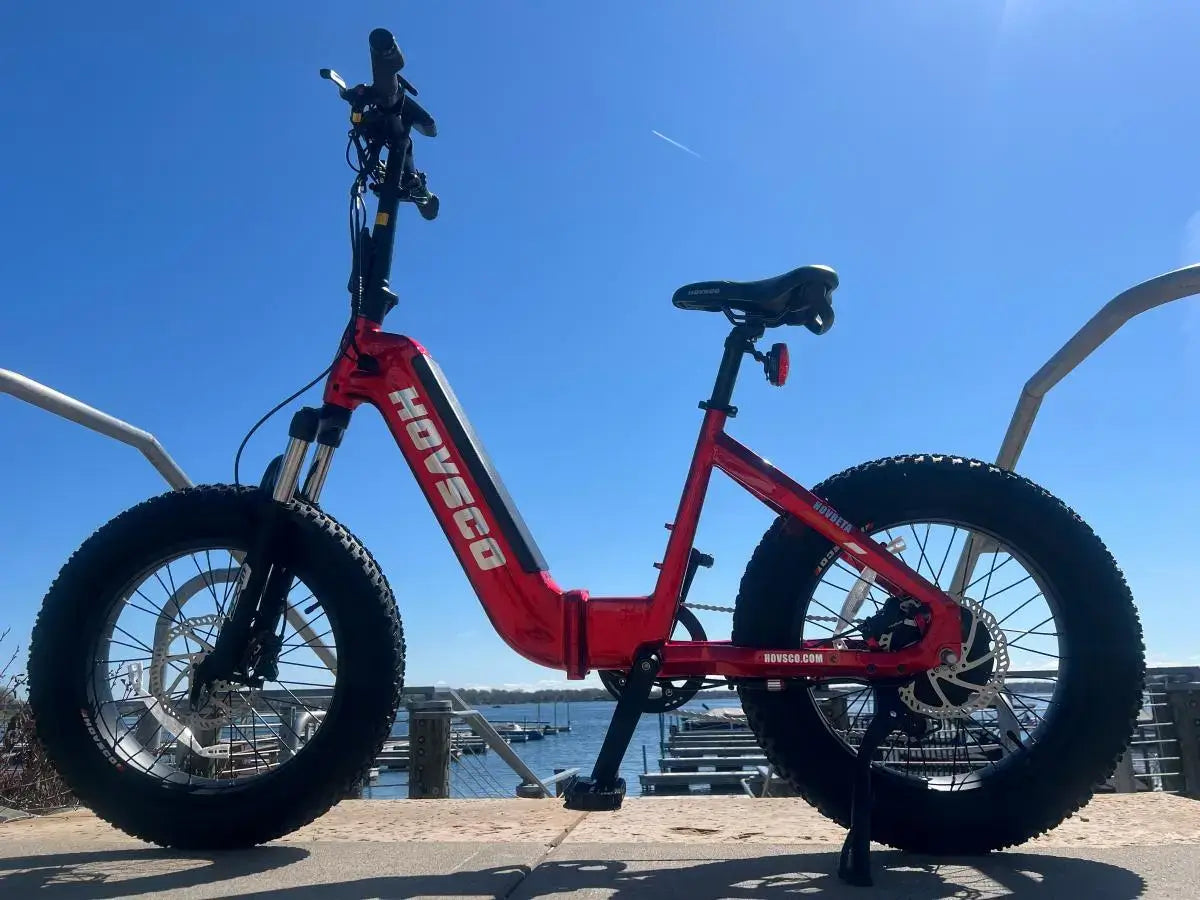
- by LiuJiazhu
What Safety Features Do Electric Bicycles Have?
- by LiuJiazhu
Electric bicycles incorporate multiple safety features designed to protect riders and enhance control, including advanced braking systems, reliable lighting, robust frame construction, and certified electrical components. Standards like EN 15194 and UL 2849 ensure e-bikes meet rigorous mechanical and electrical safety requirements, reducing risks of accidents, fires, and malfunctions while promoting rider confidence and road safety.
Electric bicycles typically feature powerful hydraulic or mechanical disc brakes that provide strong, consistent stopping power essential for the higher speeds and weights of e-bikes. Many models include regenerative braking, which not only aids in slowing the bike but also recovers energy to extend battery life. Brake sensors integrated with the motor controller instantly cut motor power when brakes are applied, preventing unintended acceleration and improving rider control. High-quality brake pads and rotors designed for e-bike loads ensure durability and effective heat dissipation during prolonged braking.
Chart: Comparison of Common E-Bike Braking Systems
| Brake Type | Stopping Power | Maintenance Needs | E-Bike Suitability |
|---|---|---|---|
| Hydraulic Disc | High | Moderate | Best for powerful e-bikes |
| Mechanical Disc | Moderate | Low | Suitable for lighter e-bikes |
| Rim Brakes | Low | Low | Less common, limited for e-bikes |
Integrated front and rear LED lights are standard on many electric bicycles, enhancing rider visibility in low-light conditions and alerting other road users. Some e-bikes feature automatic or sensor-activated lighting systems that adjust brightness based on ambient light. Reflective decals and spoke reflectors further improve visibility. Additionally, some models include turn signal indicators and brake lights synchronized with braking to communicate rider intentions clearly, reducing collision risks.
E-bike frames are engineered to withstand higher stresses from motor torque and increased rider weight. Reinforced materials such as aluminum alloys or carbon fiber composites ensure structural integrity and durability. Frames undergo rigorous testing, including compliance with standards like ISO 4210 and DIN 79010 (for cargo bikes), to verify resistance to impact, fatigue, and load capacity. Proper frame geometry also contributes to stability and handling, reducing accident risks during maneuvers or on uneven terrain.
Electrical safety is paramount in e-bikes due to the presence of high-capacity lithium-ion batteries and complex wiring. Certified systems meeting UL 2849 standards undergo extensive testing for fire, electrical shock, and mechanical hazards. Features include battery management systems (BMS) that monitor voltage, temperature, and current to prevent overcharging, overheating, and short circuits. Waterproof connectors and insulated wiring protect against moisture and corrosion. Motor controllers include fail-safes to cut power instantly during faults or crashes.
Standards like EN 15194 (Europe) and UL 2849 (North America) define comprehensive safety requirements for e-bikes, covering mechanical strength, braking performance, electrical system safety, and rider protection. EN 15194 ensures e-bikes meet speed and power limits while passing durability and stability tests. UL 2849 focuses on electrical and fire safety across the entire system, including battery and charger. Compliance with these standards reduces risks of malfunction, fire, and accidents, fostering consumer trust and regulatory acceptance.
Chart: Overview of Key E-Bike Safety Standards
| Standard | Region | Focus Area | Key Safety Aspects |
|---|---|---|---|
| EN 15194 | Europe | Mechanical & electrical safety | Braking, frame strength, speed limits |
| UL 2849 | North America | Electrical system safety | Fire prevention, electrical faults |
| DIN 79010 | Germany | Cargo bike structural safety | Load capacity, braking under heavy loads |
Modern electric bicycles often include features such as anti-lock braking systems (ABS) to prevent wheel lockup, integrated GPS tracking for theft prevention, and smartphone connectivity for real-time diagnostics and alerts. Some models offer automatic motor cut-off when the rider dismounts or detects a crash. Enhanced suspension systems improve handling and reduce rider fatigue, indirectly contributing to safety. Ergonomic grips, adjustable seats, and wide tires also improve control and comfort, reducing accident likelihood.
When purchasing an electric bicycle, prioritize models certified to recognized safety standards like EN 15194 and UL 2849 to ensure comprehensive mechanical and electrical safety. Look for e-bikes with hydraulic disc brakes, integrated lighting systems, and robust frame construction suitable for your riding style and terrain. Consider additional safety features such as ABS, motor cut-off sensors, and theft protection for enhanced security. HOVSCO electric bicycles exemplify these qualities, blending innovation with rigorous safety testing to deliver reliable, secure rides tailored to diverse needs.
“Safety is the cornerstone of every electric bicycle we develop at HOVSCO. Our commitment extends beyond compliance with standards like UL 2849 and EN 15194; we integrate advanced braking, lighting, and electronic safeguards to create a holistic protective environment for riders. Understanding that e-bikes operate at higher speeds and weights, we engineer frames and components to exceed durability requirements, ensuring stability and control. Our goal is to empower riders with confidence and peace of mind on every journey.” — HOVSCO Safety Engineering Lead
What safety standards should I look for when buying an e-bike?
Look for compliance with EN 15194 for mechanical and electrical safety in Europe and UL 2849 for electrical system safety in North America.
Are hydraulic disc brakes better for e-bike safety?
Yes, hydraulic disc brakes provide stronger, more consistent stopping power, essential for the higher speeds and weights of e-bikes.
How do e-bike batteries stay safe from fire hazards?
Certified batteries with battery management systems prevent overcharging, overheating, and short circuits, reducing fire risk.
Do e-bikes have lighting systems for night riding?
Most e-bikes come with integrated front and rear LED lights, some with automatic sensors for enhanced visibility.
What frame features improve e-bike safety?
Reinforced frames made from durable materials and tested for load capacity and impact resistance improve stability and rider protection.
Can e-bikes prevent motor power during emergencies?
Yes, many e-bikes include motor cut-off sensors that stop power delivery when brakes are applied or a crash is detected.
Share:
What Safety Features Ensure High-Speed Stability In Class 3 E-Bikes?
Do Electric Bicycles Significantly Reduce Carbon Footprint?